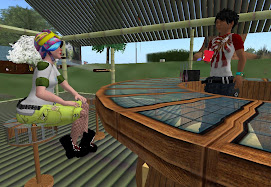martes, 23 de septiembre de 2008
Week 2: Rethinking epistemology: Connective knowledge
The article of Dave Cormier really caught my attention with the term "rhizomatic" which made me go back to those days at elementary school, long, long time ago. Since I didn't remember quite well what a rhizome was , I started by making some searches to really understand the metaphor ( by Deleux and Guattari, 1987) used to illustrate a more flexible approach to knowledge and also how communities develop without having a center, having no hierarchical but multiple horizontal relationships (connections)like the rhizome structure. I also agreed with idea that rhizomes (knowledge) spread, need space to grow and can't be confined to limited spaces (e.g. pots/classrooms )
Traditional conceptions about knowledge, educational systems and universities ( characterized by "arborescence conceptions" with linear and vertical organization) could consider this approach threatening to their monolitic structures.
Well , that's all for now.
jueves, 18 de septiembre de 2008
Week 1: How does learning occur in the network?
There are three networks involved in the learning process: neural or biological, conceptual and social/external. Learning occurs at these three levels:
- learning is the formation of new neuro-connections(biological)
- connections create meaning.(conceptual)
- connections to others and to information (social/external)
Learning in a network sense applies to the three levels previously mentioned and is related to the following:
- Depth and diversity of connections determines understanding.
- Frequency of exposure.
- Integration with existing ideas or concepts.
- Strong or weak ties.
Different types of networks with different attributes will serve different types of learning needs.
The drawback for educators: most of the discussions and concepts have been imported from other disciplines.
Networks of learning are implicit to humanity but with the help of technology(telephone or Internet)they have given any person the possibility to create and share content, dialogue with others and simulate experiences, not possible outside technology. This phenomenon has led to an abundance, complexity and expansion of the information. More then ever, networks that have existed thoughout the history of the human race are of paramount importance to survive in the changing information world.
The challenge for us teachers is the flexibility to adapt to this new environment and offer the learners the opportunities to become active learners in control of their own learning processes.
http://www.youtube.com/watch?v=YMcTHndpzYg (the changing nature of knowledge)
http://www.youtube.com/watch?v=rpbkdeyFxZw&feature=related (the network is the learning)
Week1: What is Connectivism?(1)
After listening to George’s audio I’ve been thinking that the best way I can help myself understand Connectivism is by summarizing the main points presented. I know that I learn a lot by intuition so I' m going to get the input and ,in due time,I don't know exactly when, the connection will be made and I will grasp the concept of Connectivism which I think I know by experimenting with virtual communities but I can not express right now with words.
Well, there are five principles that conform the foundations of any learning theory:
· the need to externalize to make sense: ways to express ( words, art, tools)
· The need for structures frameworks for sensemaking
· The need to socialize and negotiate around knowledge: dialogue
· The nature of our mind to note, recognize and draw patterns from situations/environments
· The desire to extend our humanity through technology: overcoming our limitations with the use of tools and innnovation.
In Connectivism:
- knowledge is essentially networked and distributed
- the experience of learning is one of forming new neural, conceptual and external networks. “Knowing” is to be in a particular manner of connectedness.
- Learning occurs is complex, chaotic shifting spaces.
- The principles of exploring, interacting with others and building knowledge is mediated by technology.
lunes, 15 de septiembre de 2008
Week1: Organizing my network...
Getting started:http://elearnspace.org/media/GettingStarted/player.html (presentation)
The daily: http://connect.downes.ca/
Moodle : http://ltc.umanitoba.ca:83/moodle/course/view.php?id=20
Pageflakes:http://www.pageflakes.com/ltc
The HUB: http://ltc.umanitoba.ca/connectivism
Weeky schedule: http://ltc.umanitoba.ca/wiki/connectivism
Each weeK: Mon-Fri: "the Daily "- Wed: informal discusson and special guests "Elluminate"- Fri:moderate discussion : "USTREAMTV"
Welcome Video : http://elearnspace.org/media/GettingStarted/player/VideoPlayer.html?exUrl=../data/swf/fm_Untitled.swf&exWndWidth=643&exWndHeight=363&exWidth=639&exHeight=359&exDuration=&exPlaybar=false&exAutoPlay=true


